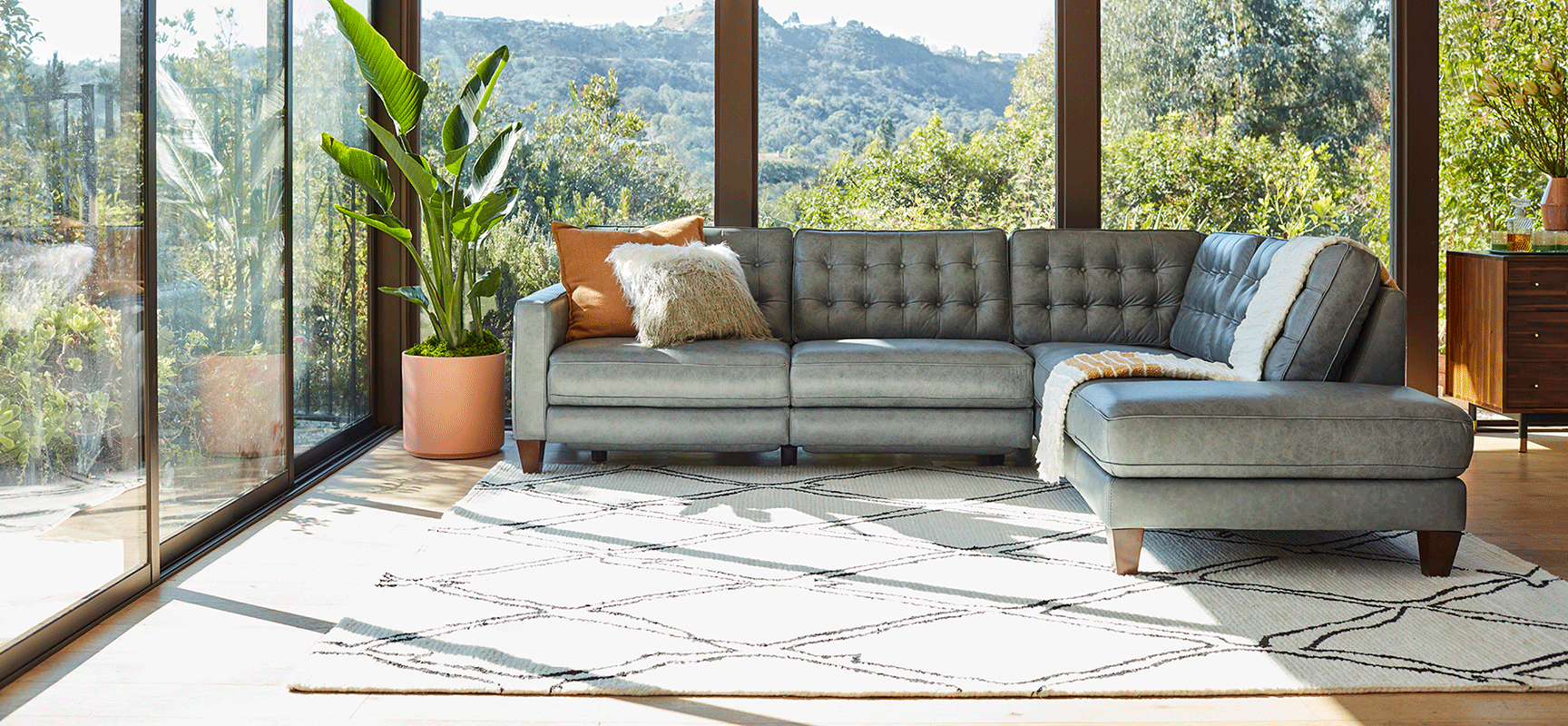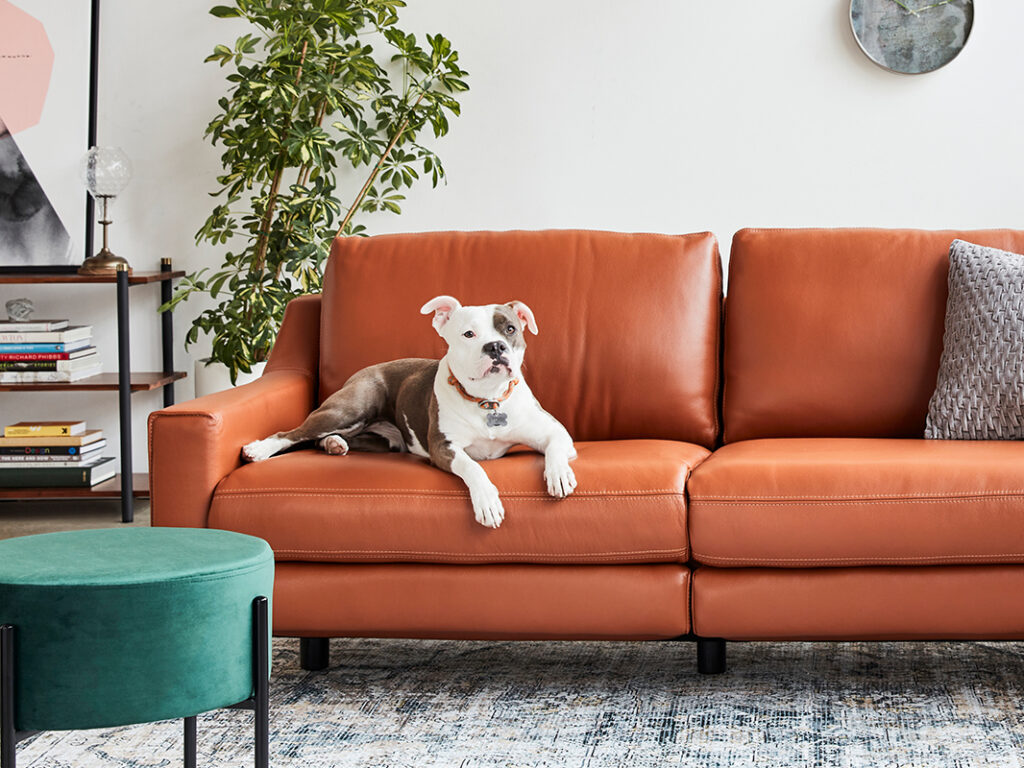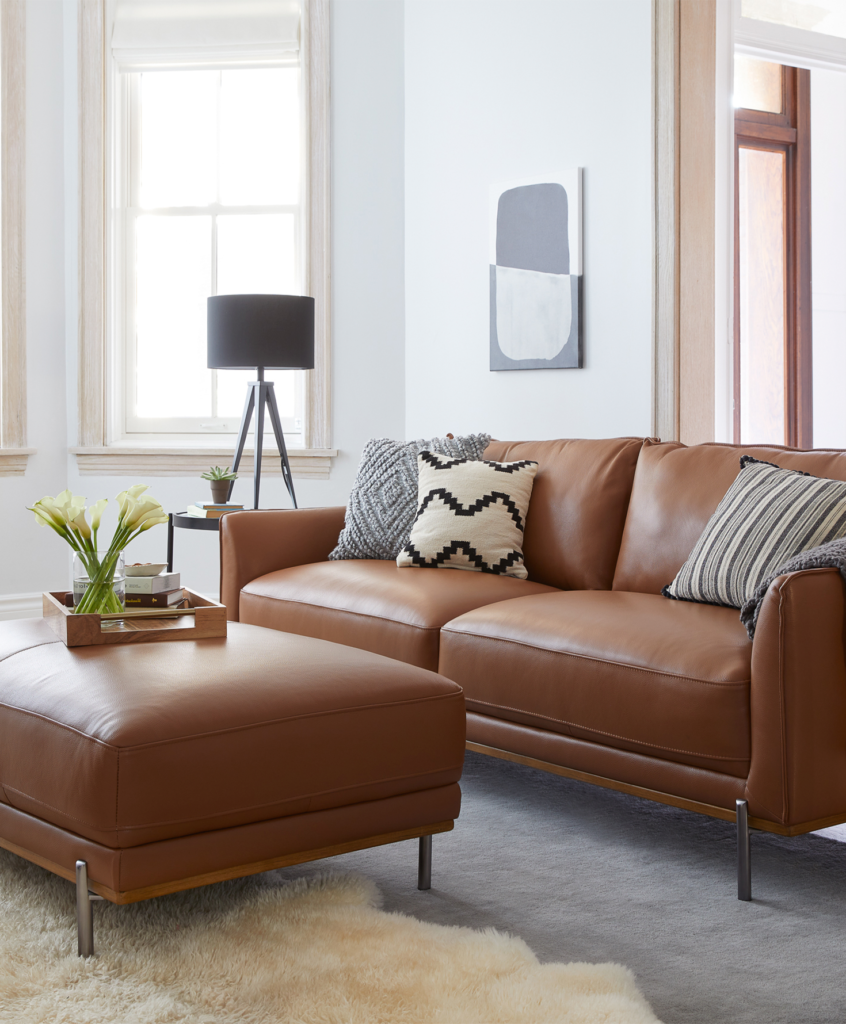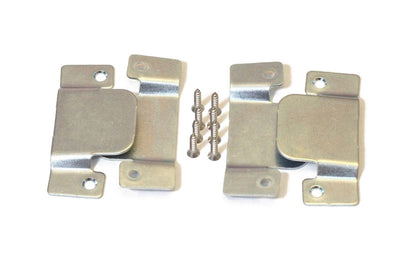You got a leather sofa to begin with because it was supposed to be durable and easier to keep clean than upholstery…but then someone ::cough cough not naming names:: took a pen to it to create a “masterpiece.” That, or maybe you got a little eager devouring your long-awaited Postmates order and…#greasestainshappen. Stop panicking, it’s not the end of the world. Before you flip your cushion and pretend it never happened (please, oh please don’t do this), there are a few simple cleaning options you have to get your trusty leather sofa back in tip-top shape.
We’re going to walk you through what works for what stains, what to never do, and just general tips for when it comes to maintaining your hide beauty. Let’s do this.
General Rules to Follow
First up, our friendly “disclaimer.” Before using anything on your leather, make sure to check with the manufacturer (or check any material that your furniture might have come with for need-to-know info) that what you’re about to use is approved for the specific type of leather you have. There are two types, if you didn’t know: pure aniline leather (this is unprotected, easy to mark leather…it will fail the “nail scratch” test but is typically much softer and supple) and protected, or semi-aniline leather (you know you have this if your leather is a bit stiffer and not as easy to scratch or mark). Oh, and of course, always test anything you’re using in a spot that’s not that visible in case it leaves a mark.
“Disclaimer…the sequel” is to avoid excessive amounts of water, no matter the cleaning method you opt for. Water is the enemy of leather and can draw the stains further into the textile, leaving hard-to-remove marks. So, just to say it now, anytime we talk about taking a damp cloth (microfiber or cotton) to the leather, we mean damp, not wet. Wring, wring, then wring some more. You’ll thank us for this tidbit.
So, let’s talk about that stain of yours…

Toranado 2pc Leather Sectional with Power Footrests in Battleship
Ink Stains
Maybe you left a pen in your pocket uncapped and you accidentally scribbled what looks to be a line drawing you could fetch a pretty penny for on Etsy. Drawings are for frames on walls, not furniture, but of course, you already know that or you wouldn’t be reading this in a (maybe?) panic. This one is easy. Using rubbing alcohol, dab (don’t rub) the markings with a cotton ball or cotton swab until the stain starts lifting. Keep at it with new, clean cotton balls/swabs until the stain is gone.
Because alcohol is drying, make sure to use a manufacturer-approved leather conditioner in the spot you treated to avoid cracking.
Grease & Oil Stains
Okay, so maybe you should polish off that shrimp scampi at a proper table next time. We’ve all been there, and there is a fix, as long as you get to it quickly. First off, if you see this spill happening, wipe it up immediately with a dry, soft cloth. DO NOT add water to it. This could soap the leather and draw the grease further in.
Sometimes, that’s all you need to fix this slippery slip-up. But if you notice the stain after the fact, there’s still hope. You’re going to want to sprinkle baking soda (you can also use corn starch) on the stain and let sit for a few hours, though best overnight. Vacuum or wipe off once the time has elapsed, and if there’s still a stain, repeat (though it should be smaller at this point).

Espada Leather Sofa with Power Footrests
General Cleaning & Maintenance
Alright, so you’re impeccably tidy, would never think to eat that pad thai on your sofa while Netflixing…you’re a role model to the rest of us. But your leather furniture is still not immune to the need for clean. Remember that leather is a natural material that needs love and care. It will dry out, become brittle and can crack (this all happens even faster if you live in a dry environment with low humidity), so twice a year cleanings and conditionings are in order if you want your investment to last. Here’s what to do:
- Dust and vacuum 1-2 times monthly
- Mix equal parts warm water and white distilled vinegar (or clear, mild dish soap) in a container or bucket; take a soft cloth, dip it in the solution, then wring it out until damp (remember, not wet!). Wipe down any parts of the leather that look discolored or darkened (likely, your denim jeans are the culprit here, but also…life), quickly following up with a dry cloth. Don’t let the leather get saturated; it’s best to work in smaller sections at a time so the water doesn’t settle in.
- Once the sofa has been wiped down and dried, be sure to go over it with a leather conditioner to keep it supple and happy.

Jude Leather Sofa & Jude Leather Ottoman in Saddle Brown Leather
Leather Cleaning Dos & Don’ts
If you follow the instructions above, there aren’t many dire things to remember, but because we’re here to help, just in case, here are a few things to avoid and remember when it comes to leather furniture cleaning and maintenance:
DO:
- Dry often
- Conditioner after any cleaning
- Check your fabric labels and with the manufacturer before applying anything to your leather
- Spot test in a hidden area before applying to large sections of your leather furniture
DON’T:
- Use leather shoe polish (this is made for shoes, not sofas, and will likely stain your furniture).
- Use harsh cleaners (avoid anything with ammonia, alkalies or bleach)
- Soak your leather furniture with excessive amounts of water
And that’s it friends. If you have any questions about how to clean your Apt2B leather sofa, never hesitate to reach out to our friendly furniture rockstars who can help to answer any concerns you might have. Call us at 1-877-825-8705 or email us at customerservice@apt2b.com.




